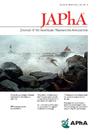自付费用对阿片类药物使用障碍和过量药物的影响:范围审查。
IF 2.5
4区 医学
Q3 PHARMACOLOGY & PHARMACY
Journal of the American Pharmacists Association
Pub Date : 2025-01-01
DOI:10.1016/j.japh.2024.102299
引用次数: 0
摘要
背景:阿片类药物流行是加拿大和其他地方的重大公共卫生危机。阿片类药物处方的增加是造成这场危机的一个主要因素。阿片类药物使用障碍(OUD)和过量用药是有效的挽救生命的治疗方法。通常,患者没有足够的保险(或没有保险)来支付OUD的药物,必须自付(OOP)。OOP费用(OOPCs)给患者带来经济负担,限制了他们获得OUD和过量用药的药物。目的:确定以下方面的证据:(i) OUD和用药过量的OOPCs, (ii)保险覆盖范围(或未保险)和相应的OOPCs对OUD起始、保留和停药的影响。方法:根据乔安娜布里格斯研究所的方法学指导进行范围审查。文献检索的目的是确定MEDLINE、Embase和CINAHL的同行评议的英文出版物,这些出版物从成立到2024年3月22日被检索。两名审稿人根据纳入标准独立完成标题、摘要和全文筛选。提取的数据使用描述性和定性方法来描述文献主体。结果:在2003年的检索结果中,共有10项研究符合纳入标准并被纳入本综述。与私人或公共保险患者相比,没有保险的患者支付了更高的门诊费用。在私人保险的OUD患者中,较大的OOPC可能导致丁丙诺啡潴留不良。与舌下丁丙诺啡/纳洛酮片相比,丁丙诺啡/纳洛酮片停药的风险更高。非专利替代或为从社区药房分发的这些药物提供覆盖,可能会最大限度地减少OOPCs的负担并改善可及性。结论:文献强调了私人/商业健康计划的受益人经历了严重的OOPCs负担,对OUD的治疗开始、保留和坚持药物治疗造成了障碍。本文章由计算机程序翻译,如有差异,请以英文原文为准。
The effect of out-of-pocket costs on medications for opioid use disorder and overdose: A scoping review
Background
The opioid epidemic is a major public health crisis in Canada and elsewhere. The increase in opioid prescriptions is a major contributor to this crisis. Medications for opioid use disorder (OUD) and overdose are effective and lifesaving treatments. Often, patients do not have adequate insurance coverage (or uninsured) for medications for OUD and have to pay out of pocket (OOP). OOP costs (OOPCs) result in financial burdens among patients, limiting their access to medications for OUD, and overdose.
Objectives
To identify the evidence on (1) the OOPCs of medications for OUD and overdose, and (2) the effect of insurance coverage (or being uninsured) and corresponding OOPCs on medications for OUD initiation, retention, and discontinuation.
Methods
This scoping review was conducted in accordance with methodological guidance from the Joanna Briggs Institute. The literature search aimed to identify peer-reviewed publications in English in MEDLINE, Embase, and CINAHL, which were searched from inception to March 22, 2024. Two reviewers independently completed title, abstract, and full-text screening against inclusion criteria. Data extracted were used to describe the body of literature using descriptive and qualitative approaches.
Results
Out of the 2003 search results, a total of ten studies met the inclusion criteria and were included in the review. Uninsured patients have paid higher OOPCs compared to private or publicly insured patients. Among privately insured patients with OUD, greater OOPC may result in poor retention of buprenorphine. The risk of discontinuation was higher with the buprenorphine/naloxone tablet compared with the sublingual buprenorphine/naloxone film. Generic substitution or providing coverage for these medications being dispensed from community pharmacies can potentially minimize the burden of OOPCs and improve access.
Conclusion
The literature highlights beneficiaries of private/commercial health plans experience a substantial burden of OOPCs, creating barriers to treatment initiation, retention, and adherence to medications for OUD.
求助全文
通过发布文献求助,成功后即可免费获取论文全文。
去求助
来源期刊
CiteScore
3.30
自引率
14.30%
发文量
336
审稿时长
46 days
期刊介绍:
The Journal of the American Pharmacists Association is the official peer-reviewed journal of the American Pharmacists Association (APhA), providing information on pharmaceutical care, drug therapy, diseases and other health issues, trends in pharmacy practice and therapeutics, informed opinion, and original research. JAPhA publishes original research, reviews, experiences, and opinion articles that link science to contemporary pharmacy practice to improve patient care.

 求助内容:
求助内容: 应助结果提醒方式:
应助结果提醒方式:


